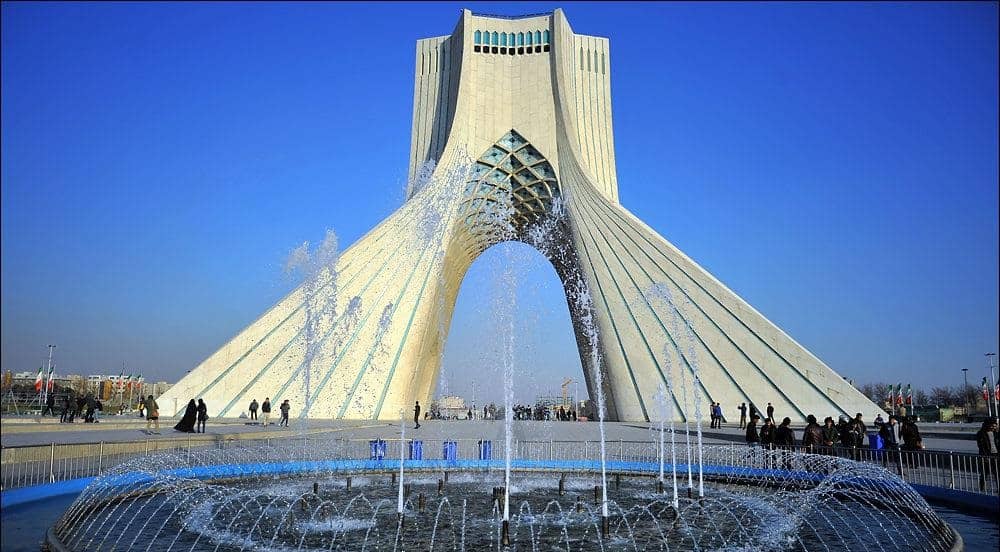Facebook
Twitter
LinkedIn
Pinterest
Reddit
Email
Print
 Azadi (freedom) Square in Tehran
Azadi (freedom) Square in Tehran
Three-minute read
The recent 12-day regional war has exposed a stark political reality: the international community’s long-standing policies toward Iran have failed. For decades, Western capitals have oscillated between two dead-end strategies: a policy of appeasement that has only emboldened the regime to export terror and instability, and the threat of a devastating military conflict. The latest conflict confirms that neither path offers a sustainable solution. Appeasement has led to disaster, while war itself cannot resolve the fundamental problem posed by the theocratic dictatorship in Tehran.
The Third Option
Amid this policy vacuum, a viable and democratic path forward has long existed. For over two decades, the Iranian Resistance has advocated for a “Third Option,” a solution that sidesteps the false choice between war and conciliation.
As Maryam Rajavi, the President-elect of the National Council of Resistance of Iran (NCRI), stated in a recent address to the European Parliament, this option rejects “both appeasement of the clerical regime and war or military intervention, instead embracing democratic change led by the people of Iran and the Iranian Resistance.” This is not a reactive proposal born from the current crisis, but a consistent, principled stance that recognizes the only path to regional peace is through the establishment of a government that reflects the will of the Iranian people.
A firm stance toward the clerical regime and standing with the people of Iran and the Iranian Resistance are the hallmarks of a principled—and ultimately effective—policy toward the mullahs. pic.twitter.com/d8w94g5GWx
— Maryam Rajavi (@Maryam_Rajavi) June 17, 2025
The viability of this Third Option is grounded not in theory, but in tangible facts on the ground. The Iranian people have unequivocally demonstrated their rejection of the ruling theocracy. Over the past seven years, they have mounted four nationwide uprisings and dozens of regional protests, coupled with widespread, organized boycotts of the regime’s sham presidential, parliamentary, and Assembly of Experts elections.
This popular opposition is channeled through a sophisticated and deeply rooted organized movement. The Iranian Resistance has a vast network of “Resistance Units“—comprised of dedicated and trained volunteers—operating in all 31 of Iran’s provinces and hundreds of its cities and towns. These units have proven their capacity to organize and steer popular protests and are prepared to secure critical infrastructure during a democratic transition.
This movement has also provided the world with hundreds of critical revelations about the regime’s nuclear, missile, and drone programs, preventing a far deadlier international security landscape.
In the past four decades, few moments have posed as grave a threat to the survival of the clerical regime as the present day. This is why they have escalated their campaign against the Iranian people through a wave of mass executions.#StopExecutionsInIranhttps://t.co/qBqBrlfYXV pic.twitter.com/PfeO5d9YbE
— Maryam Rajavi (@Maryam_Rajavi) July 1, 2025
Two Contrasting Images
As the regime feels its grip on power weakening, it has intensified its campaign of domestic terror. Since the beginning of 2025, a staggering 650 people have been executed, a figure 2.5 times higher than during the same period last year. Sixty political prisoners are currently on death row, many accused of ties to the People’s Mojahedin Organization of Iran (PMOI/MEK), their only crime being the demand for a free and just society.
This brutal crackdown stands in stark contrast to the democratic vision offered by the Resistance. The NCRI’s Ten-Point Plan for a future Iran—which calls for a secular republic, gender equality, the abolition of the death penalty, and a non-nuclear foreign policy—has garnered overwhelming international support, endorsed by majorities in dozens of parliaments, over 135 former world leaders, and more than 80 Nobel laureates. As Mrs. Rajavi affirms, “Our goal is not to seize power at any cost. Our goal is to guarantee freedom, democracy, and the Iranian people’s free choice—no matter the cost.”
Now Khamenei must go
The #Iranian people welcome the end of the war and seek peace and freedom
Khamenei is responsible for an unpatriotic project that, in addition to costing countless lives, has cost the Iranian people at least two trillion dollars—and now, it has all gone up… pic.twitter.com/u310w3JVpG
— Maryam Rajavi (@Maryam_Rajavi) June 22, 2025
What the World Can Do
The people of Iran and their organized Resistance have the capacity and the plan to achieve democratic change. They do not need foreign military intervention or financial aid. What they require is for the world to adopt a new, principled policy.
Governments must stop normalizing this brutal regime. It is time to end engagement with the Iranian regime, recognize the Iranian people’s struggle for freedom, and acknowledge the legitimacy of their Resistance movement. After more than four decades of criminality and terror, the international community faces a decisive moment. It must finally choose to stand on the right side of history—with the people of Iran.